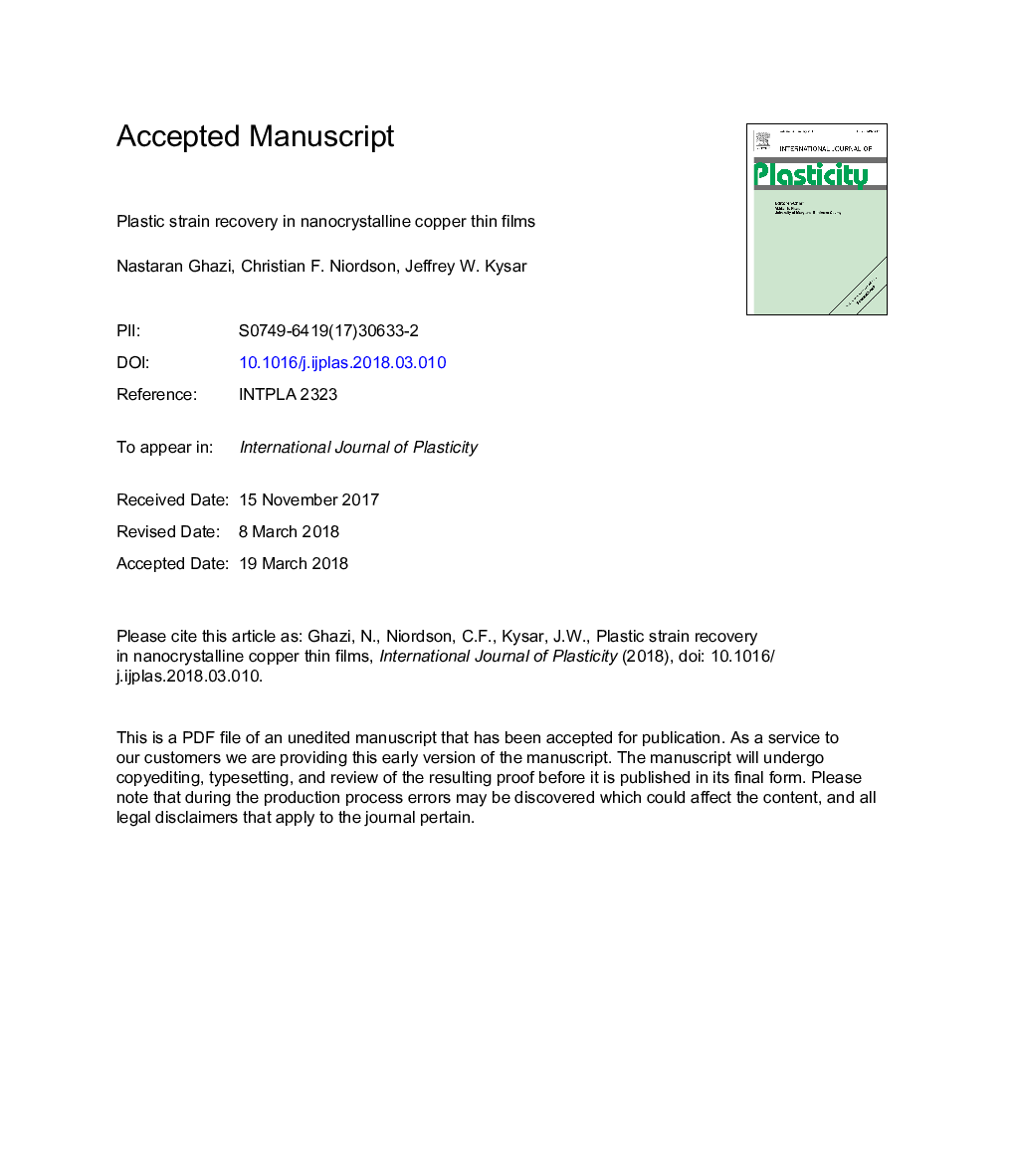| کد مقاله | کد نشریه | سال انتشار | مقاله انگلیسی | نسخه تمام متن |
|---|---|---|---|---|
| 7174786 | 1465566 | 2018 | 55 صفحه PDF | دانلود رایگان |
عنوان انگلیسی مقاله ISI
Plastic strain recovery in nanocrystalline copper thin films
ترجمه فارسی عنوان
بازیافت پلاستیک پلی کربنات نازک مس نازک
دانلود مقاله + سفارش ترجمه
دانلود مقاله ISI انگلیسی
رایگان برای ایرانیان
کلمات کلیدی
بازیافت پلاستیک پلاستیکی، مرز دانه نفوذ، المان محدود، وایس
موضوعات مرتبط
مهندسی و علوم پایه
سایر رشته های مهندسی
مهندسی مکانیک
چکیده انگلیسی
Plastic strain recovery is a distinctive behavior of nanocrystalline thin film metals whereby plastic strain induced via application of an external load is gradually recovered over a time period of hours to days after load removal. Previous studies to model plastic strain recovery assumed that grain boundary sliding or grain boundary diffusion with heterogeneous diffusivity was the dominant deformation mechanism. In this study we propose that grain boundary diffusion in the presence of nanoscopic voids can lead to plastic strain recover without having to assume a sliding or heterogeneous diffusivity on grain boundaries. To model the system numerically in the context of the finite element method, we include a diffusion zone (DZ) and a cohesive zone (CS) on the grain boundaries and also include the possibility of plastic deformation in the surrounding grains. Our results suggest that diffusion leads to a mass flux toward the “void tips” (i.e. intersections of the voids and grain boundaries) as the external load is applied. Upon removal of the load, the additional material that accumulated near the void tips introduces a compressive residual normal stress on the grain boundary. The gradient of grain boundary residual stress leads to diffusion flux away from the void tip along the grain boundary in addition to diffusion flux to the void surface from the grain boundary. This redistribution of mass leads to a reduction in specimen length that is interpreted in terms of plastic strain recovery. With time the diffusion flux reduces the grain boundary stress gradient to the point where further grain boundary diffusion flux becomes negligible, after which diffusion flux occurs predominantly from the grain boundary at the void tip to the void surface. Since only one mass flux route remains active, the predicted plastic strain recovery rate is smaller. These simulation results are consistent with our experimental results that indicate plastic strain recovery exhibits two characteristic rates: a “fast” strain rate of about [10â7]sâ1 followed by transition to a “slow” strain rate of about [10â9]sâ1.
ناشر
Database: Elsevier - ScienceDirect (ساینس دایرکت)
Journal: International Journal of Plasticity - Volume 107, August 2018, Pages 27-53
Journal: International Journal of Plasticity - Volume 107, August 2018, Pages 27-53
نویسندگان
Nastaran Ghazi, Christian F. Niordson, Jeffrey W. Kysar,
